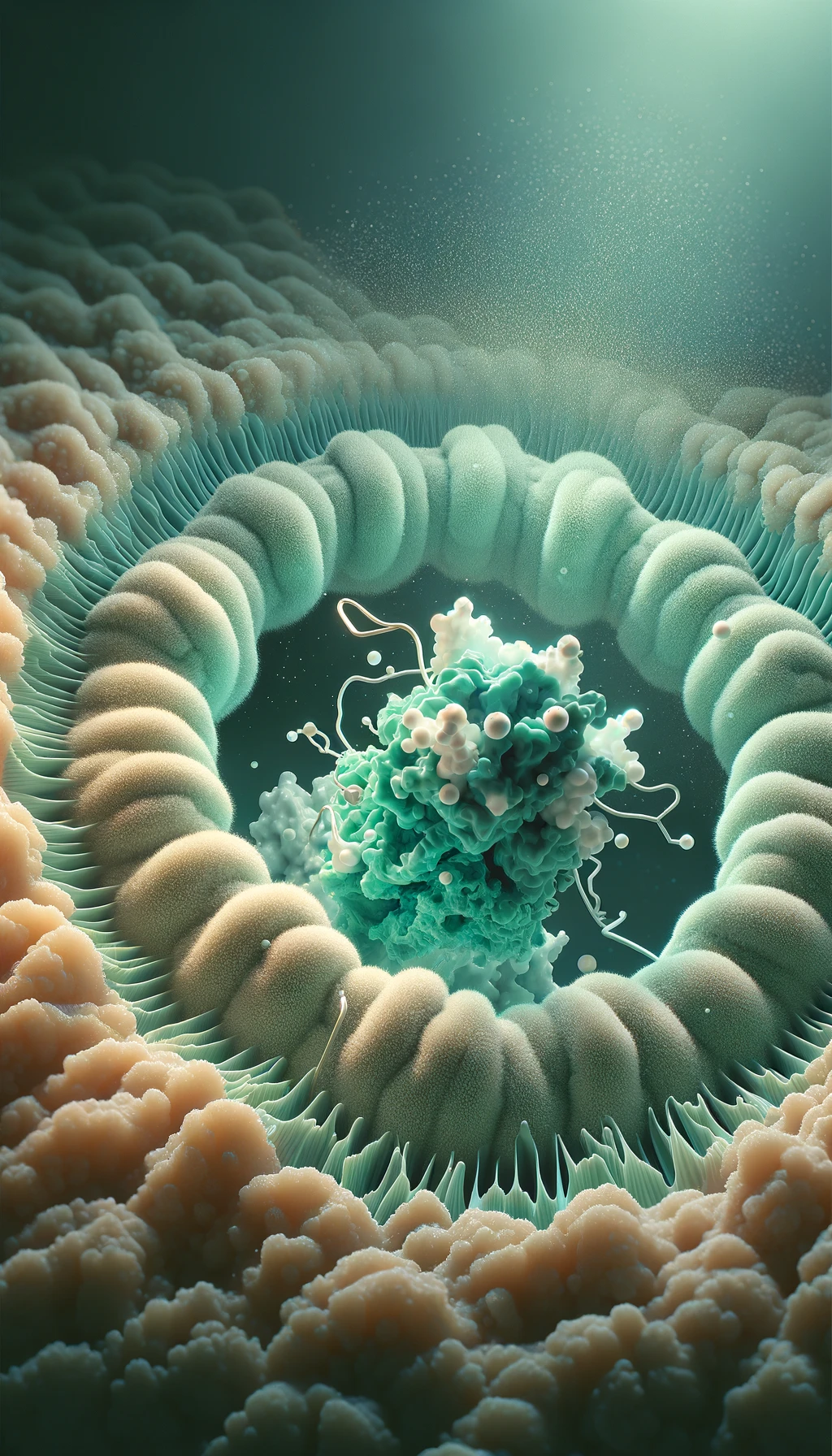
Frequently Asked Questions
-
What are Bacteriocins?
Bacteriocins are ribosomally synthesized antimicrobial peptides produced by bacteria. They are part of the bacterial defense system, mainly targeting closely related bacterial strains. Bacteriocins vary widely in their size, structure, mode of action, and spectrum of activity.
-
How do Bacteriocin Work?
Bacteriocins act primarily by disrupting the cell membrane of target bacteria, leading to cell death. Some bacteriocins form pores in the bacterial cell membrane, causing loss of vital ions and molecules, while others interfere with essential cellular processes like enzyme activity or DNA replication.
-
Why do Bacteriocins Exist?
Bacteriocins are part of the competitive strategies employed by bacteria for survival. They help the producing bacteria to compete for nutrients and space by inhibiting the growth of competing bacterial strains in their vicinity.
-
Why Don't Bacteria Develop Resistance to Bacteriocins?
Bacterial resistance to bacteriocins is less common compared to antibiotics because bacteriocins often target specific receptors on the surface of bacteria, which are essential for survival. Altering these receptors can be detrimental to the bacteria itself. However, resistance can still develop, so it's an area of ongoing research. Generally, the specificity of bacteriocins exposes less bacteria to resistance pressure, so less resistance develops.
-
What Applications can Bacteriocins be Used For?
Bacteriocins can be used for anything you can think of! Generally speaking, there is a targeted bacteriocin for every bacterium; there are trillions of different bacterial species and about 5% cause disease. Bacteriocins can be used for food preservation, treatment or prevention of diseases in plants, fish, livestock, and humans, and they can even be for microbiome modulation!
-
Are Bacteriocins Safe?
Bacteriocins are specific to bacteria and do not affect human cells, they are non-toxic and are safe enough to eat. In fact, some bacteriocins are considered Generally Recognized as Safe (GRAS) by the FDA, and were likely used in some of the food you’ve eaten today to keep it free of spoilage bacteria!
-
How do You Produce Bacteriocins?
Bacteriocins can be produced through fermentation, where bacteriocin-producing bacteria are cultured under controlled conditions. Advances in biotechnology also allow for the synthesis or modification of bacteriocins using recombinant DNA technology for large-scale production.
-
Are Bacteriocins GMO?
There are likely trillions of bacteriocins produced naturally by bacteria, Organicin Scientific uses our discovery engine to find those naturally occurring strains. Bacteriocins almost by definition are not GMO, but bacteria can be genetically modified to produce bacteriocins.
-
Are Bacteriocins Environmentally Sustainable?
Bacteriocins are proteins, and thus naturally biodegrade into amino acids — the basic building blocks of life. This natural biodegradation also means that bacteriocins don’t bioaccumulate and cause harm to animals or ecosystems.

-
How does Organicin Scientific use Machine Learning and AI to Discover and Develop Bacteriocins?
Machine learning and artificial intelligence (AI) play a pivotal role in extracting valuable insights from the vast and complex datasets prevalent in the study of proteins like bacteriocins. These datasets encompass not only the intricate structures and functions of bacteriocins themselves but also the dynamic interactions between various bacteria. This immense data pool, possibly one of the largest and most intricate in all of biological sciences, includes genomic sequences, protein sequences and structures, biochemical properties, bacterial behavior, and inhibitory interaction networks. AI and machine learning algorithms are particularly adept at identifying patterns and correlations within these unfathomably large and extensively connected datasets, which might elude traditional analytical methods. By harnessing these advanced technologies, we can uncover deeper understandings of bacteriocin mechanisms, optimize their therapeutic potential, and predict their interactions with bacterial targets more accurately.
